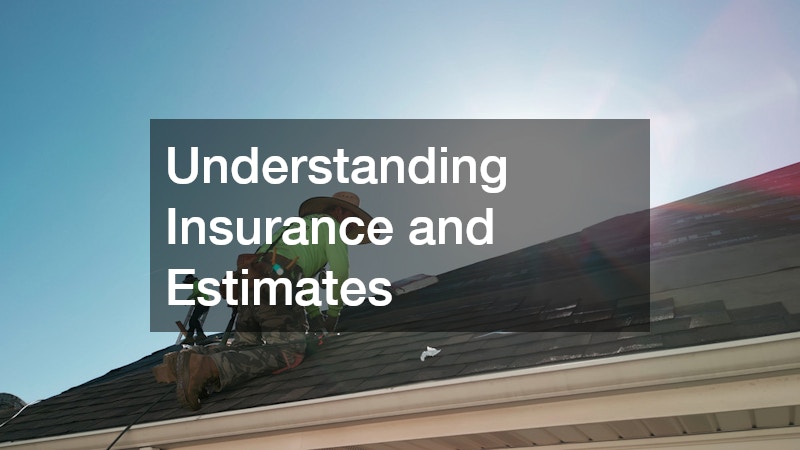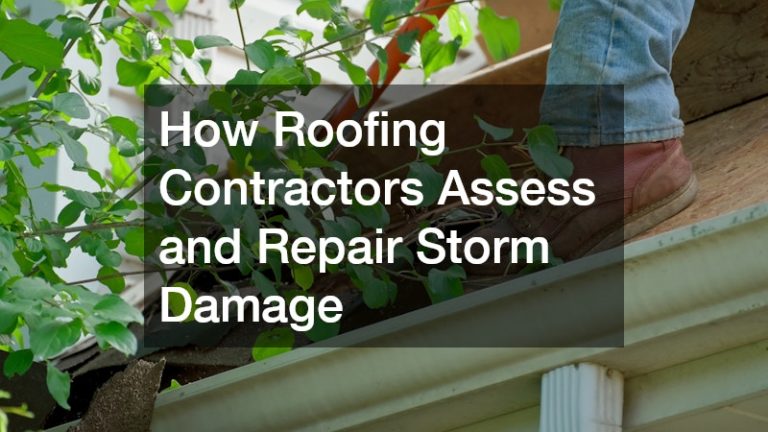Understanding how roofing contractors handle storm damage is crucial for homeowners looking to protect their investments. In this comprehensive guide, we explore the processes and considerations that experts use to assess and repair roofing damage caused by storms. Homeowners are often unaware of the complexities involved in assessing storm damage, which is why professional intervention is essential.
How Contractors Assess Storm Damage to a Roof
Inspection Techniques
The assessment of storm damage starts with a thorough inspection of the roofing structure. Contractors employ various tools and methods, such as visual inspections from the ground and atop the roof. Additionally, the use of drones has become increasingly popular, allowing contractors to safely and accurately evaluate hard-to-access areas of a roof.
These drones are equipped with high-resolution cameras to capture clear images of damage that might not be visible to the naked eye. This technology provides a comprehensive overview of potential problem areas, enabling contractors to make informed decisions on the necessary repairs. With accurate data, they can prioritize repairs to ensure the most critical damage is addressed first.
Moreover, contractors are trained to identify subtle signs of damage that may lead to severe problems if left unchecked. They use moisture meters and infrared technology to detect hidden leaks or water intrusion, which are common after heavy rainfall. This expertise ensures that all aspects of storm damage are accounted for and properly addressed.
Identifying Common Damage Types
Storms can cause a variety of damage types, each requiring specific attention during assessments. Contractors are adept at identifying damage caused by hail, such as cracked or broken shingles, which can compromise the roof’s integrity. In cases of wind damage, they look for missing shingles, lifted edges, and other structural stresses.
Water damage from heavy rain is another common issue, often resulting in leaks or mold growth if the water infiltration is significant. To counter this, contractors look for telltale signs like water stains inside the attic or on the ceiling. Even slight water ingress can lead to costly repairs if not identified early.
Another critical area is the examination of flashing and gutters, as these components play an essential role in a roofing system’s ability to repel water. Improper drainage or damaged flashing can exacerbate storm damage. Contractors thoroughly check these areas to ensure the roof’s durability is maintained.
Materials and Methods Used for Repairs
Choosing the Right Materials
Selecting appropriate materials is critical for ensuring lasting roof repairs post-storm. Contractors consider factors such as local climate and roof type when choosing between materials like asphalt shingles, metal panels, or newer eco-friendly options. Each material has distinct advantages that may make it more suitable for certain environments.
Asphalt shingles are widely used due to their affordability and resilience against varying weather conditions. Metal roofs, while costlier, offer exceptional durability and long-term value, especially in regions prone to hailstorms. Additionally, contractors may propose eco-friendly materials like recycled shingles, appealing to environmentally-conscious homeowners.
Repair Techniques and Best Practices
Roof repair requires precise execution and adherence to industry best practices to guarantee structural integrity and longevity. Contractors employ techniques like patching, sealing, and complete reroofing based on the severity of the damage. Such repairs need careful planning to avoid future complications.
Patching involves fixing small areas where damage has occurred, particularly useful for isolated issues like cracked shingles. Sealing is crucial for waterproofing, especially in areas prone to leaks; it involves applying sealants to joints and flashing. For extensive damage, reroofing may be necessary, which involves installing new roofing materials over the existing structure to provide a fresh, durable surface.
Typical Cost of Storm Repair
Factors Influencing Repair Costs
The cost of repairing storm damage is influenced by various factors, making it essential for homeowners to understand what drives pricing. One key factor is the extent of damage, as more extensive repairs require additional labor and materials. The choice of materials, whether opting for standard or high-end options, also significantly impacts the overall cost.
Furthermore, labor costs can vary depending on the contractor’s expertise and the location’s prevailing wage rates. Roof complexity, such as having multiple angles or unique features, may increase costs due to the additional time and skill required. Lastly, urgency plays a role in cost, as emergency repairs to prevent further damage can be more expensive.
Understanding Insurance and Estimates
Navigating insurance claims for storm damage can be daunting, requiring an understanding of policies and coverage limits. Homeowners should contact their insurance providers promptly after a storm to initiate the claims process. It’s crucial to document all damages thoroughly with photographs and a detailed assessment from a reputable contractor.
Working with contractors who have experience in dealing with insurance claims can simplify the process. They can provide accurate estimates for repairs that align with insurance requirements, ensuring that homeowners are reimbursed appropriately. Additionally, contractors often assist in presenting the necessary documentation and negotiating with insurance adjusters to maximize coverage.
By understanding the assessment and repair process for storm damage, homeowners can make informed decisions when selecting roofing contractors. This article provides valuable insights into the techniques, materials, and costs involved, ensuring you are better prepared for the next storm. Protecting your home requires collaboration with skilled professionals who can safeguard your investment through quality roofing solutions.

